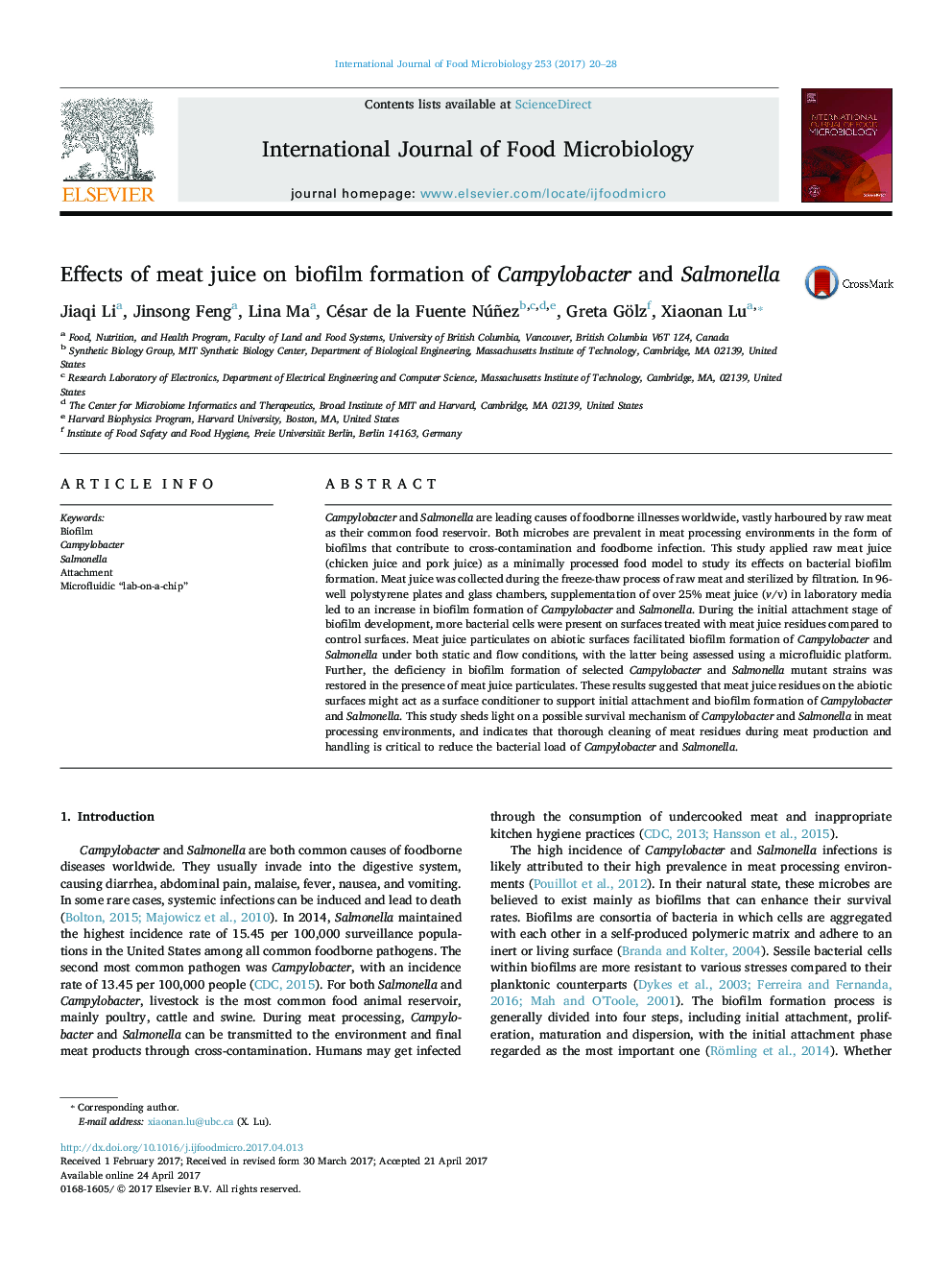| کد مقاله | کد نشریه | سال انتشار | مقاله انگلیسی | نسخه تمام متن |
|---|---|---|---|---|
| 5740758 | 1616530 | 2017 | 9 صفحه PDF | دانلود رایگان |
- We studied the principle of effect of meat juice on Campylobacter and Salmonella biofilm formation under both static and flow conditions
- Meat juice residues act as a surface conditioner to support initial attachment and biofilm formation of Campylobacter and Salmonella.
- The deficiency in biofilm formation of selected Campylobacter and Salmonella mutant strains was restored in the presence of meat juice particulates.
Campylobacter and Salmonella are leading causes of foodborne illnesses worldwide, vastly harboured by raw meat as their common food reservoir. Both microbes are prevalent in meat processing environments in the form of biofilms that contribute to cross-contamination and foodborne infection. This study applied raw meat juice (chicken juice and pork juice) as a minimally processed food model to study its effects on bacterial biofilm formation. Meat juice was collected during the freeze-thaw process of raw meat and sterilized by filtration. In 96-well polystyrene plates and glass chambers, supplementation of over 25% meat juice (v/v) in laboratory media led to an increase in biofilm formation of Campylobacter and Salmonella. During the initial attachment stage of biofilm development, more bacterial cells were present on surfaces treated with meat juice residues compared to control surfaces. Meat juice particulates on abiotic surfaces facilitated biofilm formation of Campylobacter and Salmonella under both static and flow conditions, with the latter being assessed using a microfluidic platform. Further, the deficiency in biofilm formation of selected Campylobacter and Salmonella mutant strains was restored in the presence of meat juice particulates. These results suggested that meat juice residues on the abiotic surfaces might act as a surface conditioner to support initial attachment and biofilm formation of Campylobacter and Salmonella. This study sheds light on a possible survival mechanism of Campylobacter and Salmonella in meat processing environments, and indicates that thorough cleaning of meat residues during meat production and handling is critical to reduce the bacterial load of Campylobacter and Salmonella.
Journal: International Journal of Food Microbiology - Volume 253, 17 July 2017, Pages 20-28
